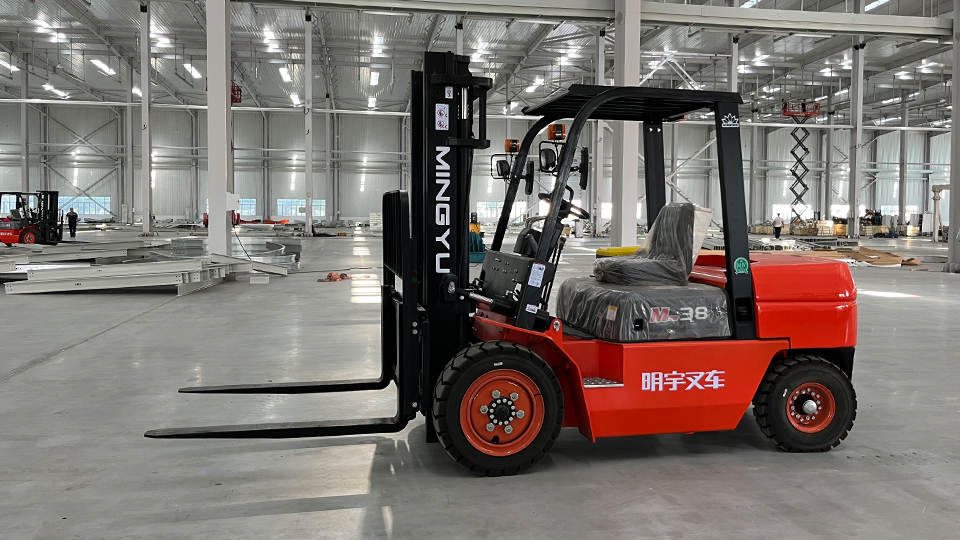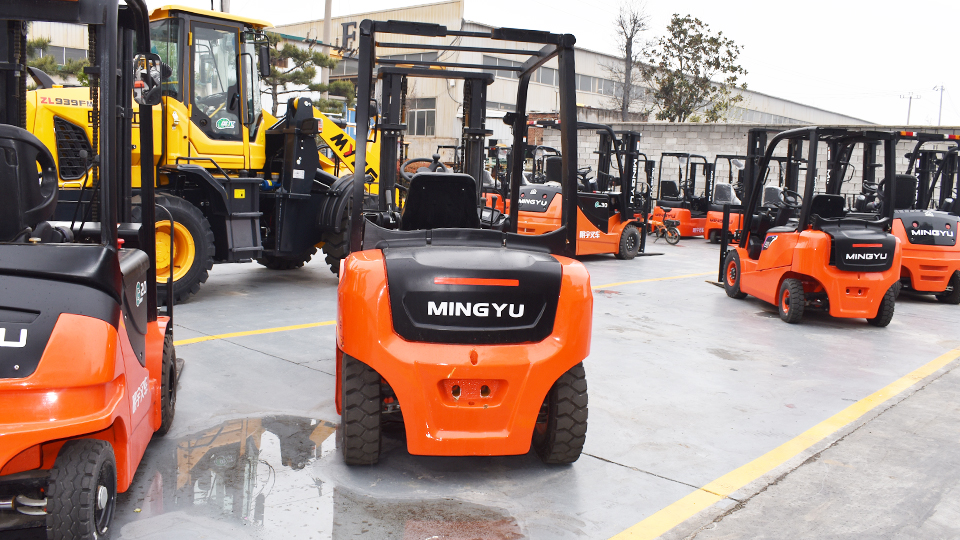
The definitive answer is Yes, The Home Depot, through its Tool and Equipment Rental Centers, offers forklift rentals as part of its large equipment fleet. However, the process, availability, and types of equipment available are highly dependent on the store location, the specific needs of the job, and a clear understanding of the logistics and professional requirements associated with renting heavy machinery.
This article provides a comprehensive, technical examination of The Home Depot’s forklift rental program, focusing on the equipment classes, rental terms, logistical considerations, and the crucial safety and certification mandates that a prospective renter must address.
1. The Home Depot Rental Ecosystem: An Overview
The Home Depot’s rental service is a key component of its professional and DIY offerings, providing access to specialized, high-cost machinery without the burden of ownership, maintenance, and storage. The service operates on a bifurcated model:
Tool Rental Center: Primarily handles smaller, portable tools (drills, saws, pressure washers).
Large Equipment Rental: This is the division that manages heavy machinery, including earthmoving equipment, aerial lifts (scissor and boom lifts), and, critically, Powered Industrial Trucks (PITs), a category that encompasses forklifts.
The availability of large equipment like forklifts is restricted to specific locations that have the necessary infrastructure and partnership agreements, often referred to as The Home Depot Rental or Pro Rental Centers.

Key Forklift Rental Types Available
The Home Depot Rental typically focuses on industrial-grade material handling solutions suitable for commercial construction, warehousing, or extensive residential projects. The most common classes available include:
Forklift Type (OSHA Class) Typical Capacity Primary Application Characteristics
Industrial Forklift (Counterbalance) 5,000 lbs to 15,000 lbs General warehousing, loading/unloading trucks, construction sites. The most common, versatile lift. Uses a weight in the rear to counter the load on the front.
Telehandler (Telescopic Handler) Varies greatly; 6,000 lbs and up Construction, agriculture, placing loads at height (e.g., roof trusses). Features a telescopic boom, acting as a crane and a forklift. Classified as a different type of PIT.
Pallet Jack (Manual/Electric) 4,000 lbs to 6,000 lbs Moving loaded pallets within a warehouse or trailer over short distances. Lower-capacity, non-stacking equipment often available at all rental centers.
Boom/Scissor Lifts N/A (Personnel Lifts) Reaching elevated work areas for maintenance or construction. While not technically a forklift, they are often grouped with lifting equipment rentals.
Technical Note: Specific models and capacities (e.g., 5,000 lb Doosan Industrial Forklift, Quad Mast) are subject to regional inventory and rental fleet rotation. Customers must verify the exact specifications with their local Rental Center.
2. Logistics and Rental Mechanics
Renting a forklift from The Home Depot is a straightforward process, but it requires adherence to specific professional protocols, especially regarding transportation.
Rental Rates and Duration
Forklift rentals are structured for commercial flexibility. Typical rental periods include:
4-Hour Rate: Suitable for very short tasks or quick loading/unloading needs.
Daily Rate (24 hours): The standard rental term.
Weekly Rate (7 days): Offers a significant discount over the daily rate for longer projects.
4-Week Rate (Monthly): The most cost-effective solution for long-term project support.
Pricing Example (Illustrative based on market data):
5,000 lb Industrial Forklift: ≈$300−$400 per day.
6,000 lb Telehandler: ≈$350−$500 per day.
Transportation and Delivery
The logistical requirement is the primary technical barrier for the average renter. Full-sized industrial forklifts cannot be transported in a standard pickup truck or trailer due to their immense weight, dimensions, and center of gravity.
Transportation Options:
Customer Pickup: Requires a heavy-duty truck (Class 4 or higher), a specialized flatbed trailer with the appropriate gross vehicle weight rating (GVWR), and proper commercial loading equipment (ramps, chains, binders) to secure the load. This is primarily an option for professional contractors with their own transport fleet.
Home Depot Delivery Service: This is the most common option for non-commercial customers. The Home Depot Rental offers jobsite delivery and pickup for large equipment in select markets, typically at a flat rate.
Delivery Fee: This is a separate charge and is not included in the rental price. Fees are typically minimum fixed rates (e.g., $100−$150 each way) and can increase based on distance from the rental center.
Requirement: Delivery typically mandates a minimum 1-day rental.
Technical Consideration: The gross weight of a 5,000 lb counterbalance forklift can easily exceed 9,000 lbs due to the weight added for stability. Proper loading and securing the machine on the transport vehicle is a critical safety and liability issue.
3. The Absolute Mandate: Operator Certification and Safety
The single most important technical and legal requirement for renting and operating a forklift—regardless of the rental source—is Operator Certification as mandated by the Occupational Safety and Health Administration (OSHA) under 29 CFR 1910.178 (l) for Powered Industrial Trucks (PITs).
The Certification Requirement
It is illegal to operate a rented forklift without proper certification. The Home Depot Rental may require the renter to acknowledge this legal responsibility, but the enforcement responsibility ultimately lies with the employer (which, for a residential project, is the person supervising the work).
OSHA's standard requires:
Formal Instruction (Theoretical Knowledge): Classroom training covering safe operation principles, load stability, and site-specific rules.
Practical Training (Hands-on): Demonstration and exercises on the specific type of PIT being used.
Performance Evaluation: A final assessment of the operator's competence in the workplace.
The key takeaway is that the certification must be specific to the type of forklift being rented. Someone certified on a sit-down counterbalance forklift (Class I/IV/V) must receive additional practical training and evaluation before operating a telehandler (Class VII).
Safety and Pre-Use Inspection
The renter assumes full liability for the safe operation of the equipment.
Pre-Operational Check: OSHA mandates that forklifts be inspected before each shift, or at least daily. The renter must perform a thorough check, including the condition of the forks, tires, mast, fluid levels (for internal combustion models), battery charge (for electric models), and all safety devices (horn, lights, seatbelt, etc.).
Site Survey: The operator must assess the rental location for hazards, including:
Floor conditions (cracks, uneven surfaces, load capacity).
Overhead obstructions (lights, pipes, low doorways).
Ramps and grades (operating limits).
Pedestrian traffic management.
Capacity Plate (Data Plate): The operator must strictly adhere to the load capacity listed on the forklift's data plate, which includes maximum weight and the rated load center distance. Operating outside these limits is the leading cause of tip-overs.
4. Technical Differences in Forklift Classes for Rental
When a customer asks to rent a "forklift," The Home Depot will likely offer different classes depending on the intended use.
A. Industrial Counterbalance Forklifts
These are the most familiar and are designed for general material handling.
Fuel Types: Often LP-Gas (Propane) for outdoor and well-ventilated indoor use, or Diesel for heavy-duty outdoor construction. Electric models (battery) are less common for general rental fleets but may be available for sensitive indoor environments.
Tire Types:
Cushion Tires (Solid): Designed for smooth, indoor concrete floors. Cannot be used on rough terrain.
Pneumatic Tires (Air-filled): Designed for use on asphalt, gravel, and uneven outdoor surfaces (construction sites).
B. Telehandlers (Class VII - Rough Terrain)
A telehandler offers a fundamentally different lifting mechanism.
Lifting Dynamics: Instead of a vertical mast, the load is lifted and extended forward via a long, telescoping boom. This dramatically shifts the center of gravity, requiring outriggers or stabilizers for maximum lift capacity and extension.
Safety Interlocks: Telehandlers are equipped with sophisticated Load Moment Indicators (LMIs) and stability interlocks to warn the operator and prevent lifting loads that exceed the stability triangle's limits. These systems must be fully operational and understood by the renter.
Usage: They are rented when the job requires reach (to upper floors or over obstacles) rather than just vertical lift.
C. Electric Pallet Jacks
These are specialized for moving, not stacking.
Advantage: Compact, highly maneuverable, and electric-powered, making them ideal for small warehouses, retail backrooms, and moving materials into freight elevators.
Certification: They still qualify as PITs under OSHA and require the same three-part training and certification as larger forklifts.
5. The Renting Profile: Who Should Rent from Home Depot?
The type of customer that benefits most from The Home Depot’s forklift rental program generally falls into two categories:
A. The Small to Mid-Sized Contractor (Pro)
Need: Supplemental equipment for a short-term construction project, seasonal peak in warehouse activity, or to cover downtime when their primary forklift is in maintenance.
Profile: Has certified operators on staff, their own insurance, and often their own heavy-duty transport, though they will frequently use the delivery service to save time. They value the convenience and competitive rates of a major retailer.
B. The Specialized DIY/Residential User
Need: A one-time lift for a massive residential project, such as installing a steel beam, lifting a large HVAC unit to a roof, or moving an abnormally heavy structure.
Profile: This is the most critical user profile regarding safety. The individual likely lacks certification and heavy equipment transport. They must understand that renting a forklift requires:
Hiring a Certified Operator: The homeowner must either obtain certification themselves (a lengthy process) or hire a fully certified, competent operator for the duration of the rental.
Delivery: Mandatory use of the Home Depot delivery service.

Liability: Securing temporary insurance coverage, as personal homeowner’s policies may not cover large equipment operation.
Conclusion
The Home Depot has firmly established itself as a major provider in the heavy equipment rental market, and yes, you can rent a forklift from them.
Their offering is a robust, commercially oriented service that provides access to industrial-grade counterbalance forklifts and specialized telehandlers. However, renting a forklift is not equivalent to renting a hand drill. The process involves significant technical and legal considerations that separate it from a standard consumer transaction.
The success and compliance of a Home Depot forklift rental depend on the renter’s absolute commitment to:
Verification: Confirming the availability of the specific equipment (e.g., 5,000 lb capacity, pneumatic tires) at the local rental center.
Logistics: Planning for professional, secured transportation, most commonly via the Home Depot's delivery service.
Compliance (The Non-Negotiable Factor): Ensuring that the individual operating the machine possesses a valid, OSHA-compliant certification for the specific class of forklift being rented.
For the professional, The Home Depot offers convenience and competitive rates. For the ambitious homeowner, it offers the necessary equipment but necessitates a diligent and often expensive commitment to legal safety and operational standards.
Name: selena
Mobile:+86-13176910558
Tel:+86-0535-2090977
Whatsapp:8613181602336
Email:vip@mingyuforklift.com
Add:Xiaqiu Town, Laizhou, Yantai City, Shandong Province, China